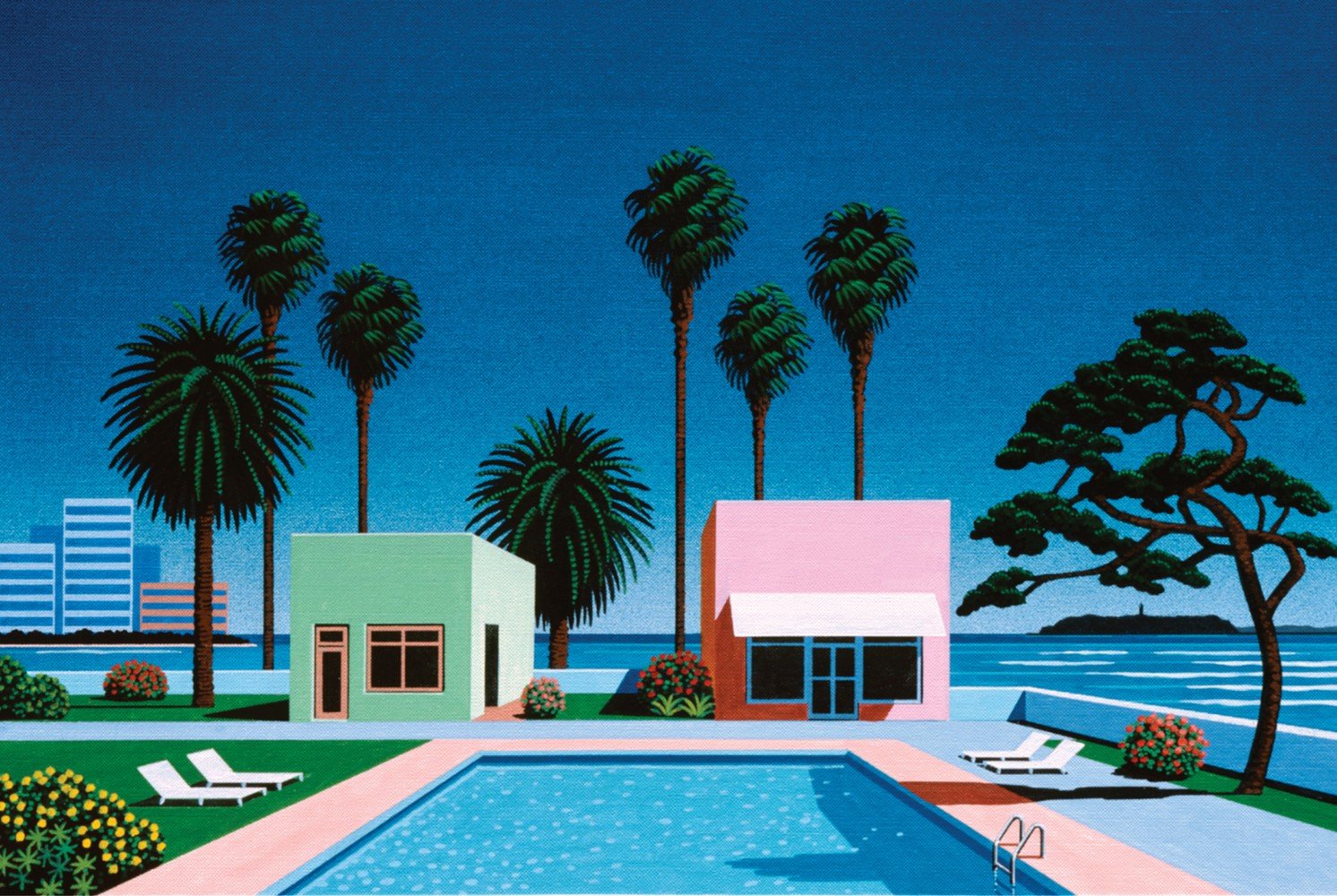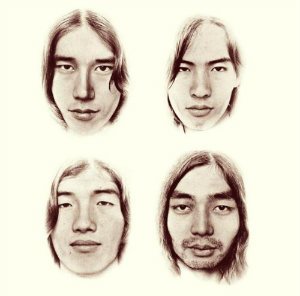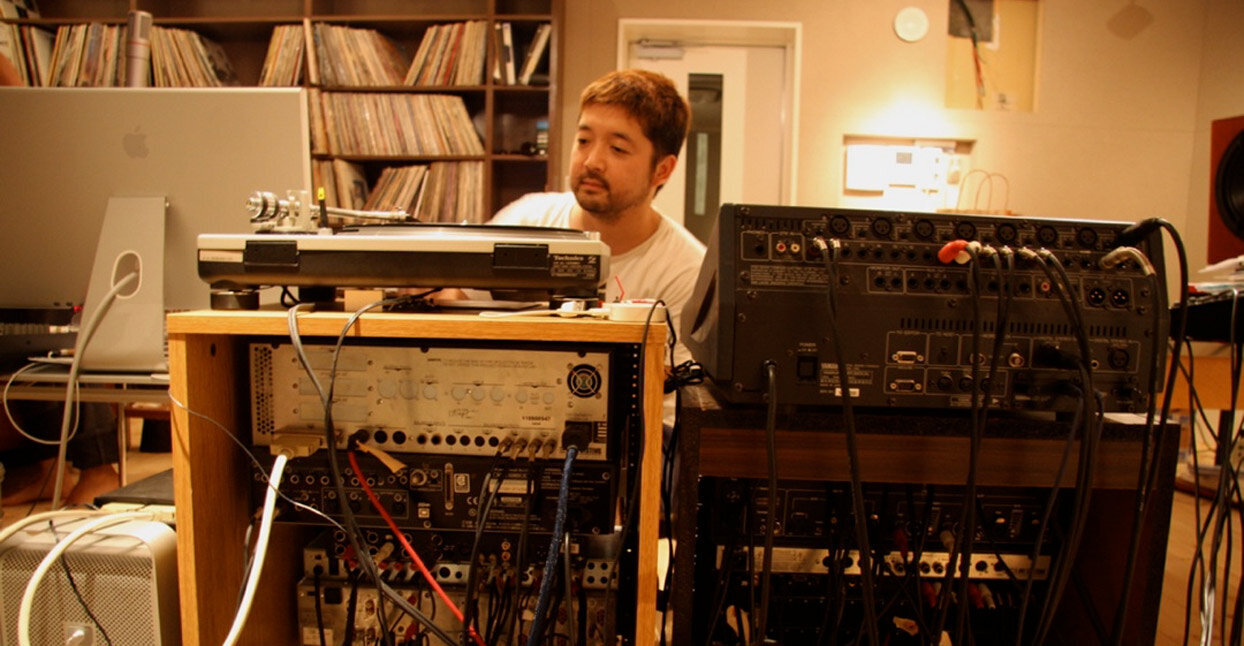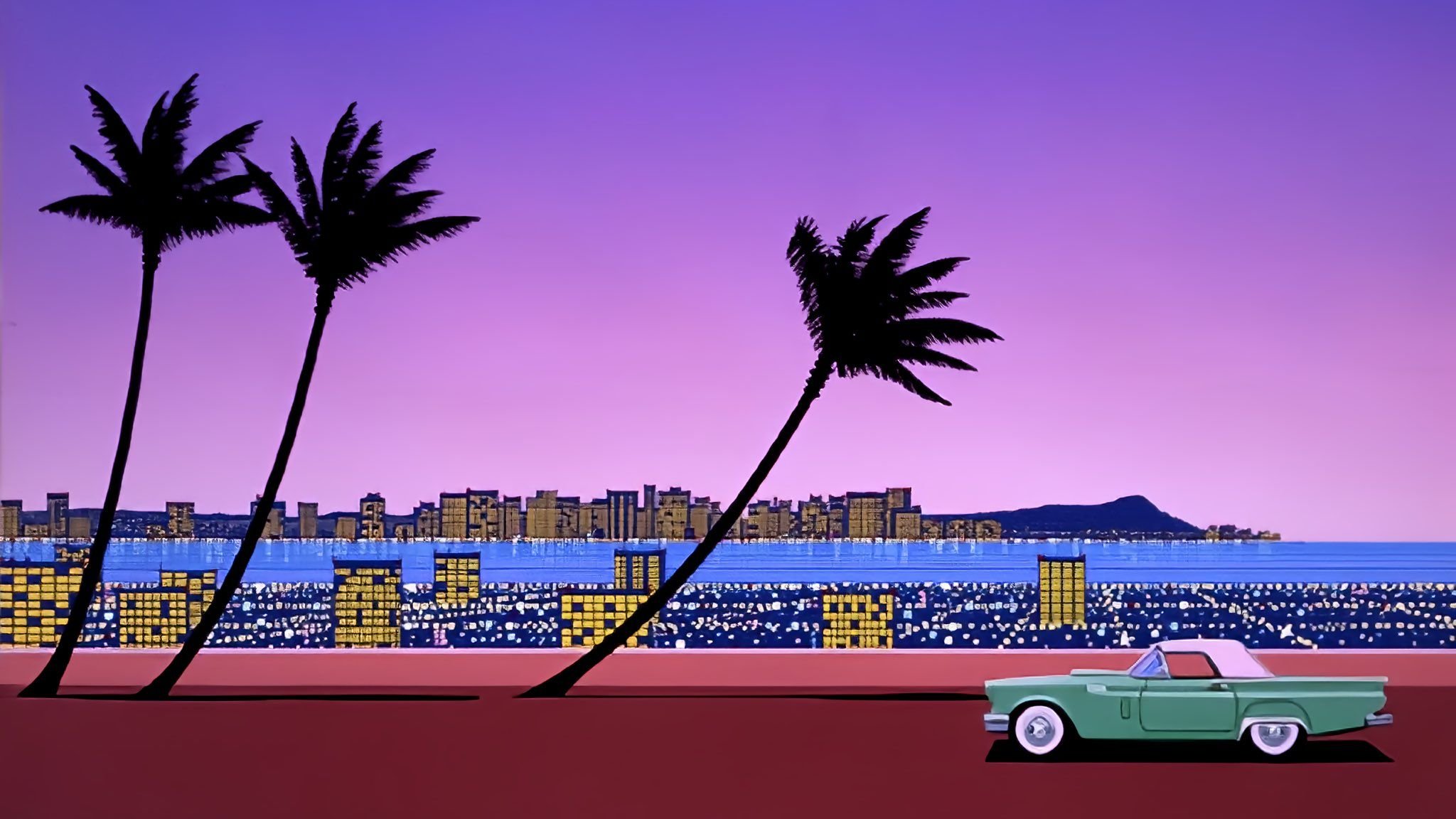NOSTALGIA FOR AN ERA THAT YOU DIDN’T EXIST IN: A DEEP DIVE INTO CITY POP

JAPAN’S 80s BUBBLE-ERA SOUNDTRACK
[*start listening to our City Pop Playlist before reading]
City Pop icon Anri’s 1983 album cover for “Timely!!”
Japanese DJ and producer tofubeats’ city pop inspired cover art for his 2012 album “Mercury”
Still image of a cityscape from anime “Sailor Moon”. The “shoujo” bubbles across the bottom and pastel shades are often used to depict the imagery that listeners often associate with City Pop
Thanks to YouTube’s recommendation algorithm circulating Japanese singer Takeuchi Mariya’s 1984 hit “Plastic Love” across the pond to the western world in the late 2010s, and more recently with the 2020 TikTok hit “Mayonaka no Door / Stay With Me” [released in 1979 by Miki Matsubara] reaching #1 on the Spotify Viral Charts, Japan’s 80s City Pop music stars have finally achieved the global recognition that they deserve.
In this article, we will take you on a journey from the rise and fall of City Pop in Japan, all the way to its present-day revival in the West, along with which Artists and Tracks that you need to add to your playlist right now.
THE BIRTH OF CITY POP
The emergence of City Pop in the 80s can be linked to the economic boom after the second world war that made Japan the world’s second largest economy at the time. The people of Japan who benefited from this post-war “economic miracle” were eager to celebrate by indulging in American-inspired extravagances such as luxury clothes, fine dining, travel, and nightlife. Combined with the advent of the Sony Walkman and cutting-edge car stereos, this resulted in Japan needing a cosmopolitan soundtrack to this lifestyle, and so City Pop was born.
From left to right - Eiichi Ohtaki, Haruomi Hosono, Shigeru Suzuki and Takashi Matsumoto.
Happy End’s second album Kazemachi Roman cover illustrated by Kazuhiko Miyaya (1971), clockwise from top left: Matsumoto, Suzuki, Hosono and Ohtaki
The very first City Pop track can actually be traced to the early 70s with the Japanese folk-rock band Happy End’s self-titled album. Having been exposed to American pop culture in the post-war era, the band members were naturally able to bring together Japanese and American music, with lyrics often about city life and nostalgia towards a bygone era.
While only active from 1969 until 1973, Happy End were one of the most influential bands in Japanese music history, not only for their Japanese-language folk-rock songs at a time when other Japanese rock bands sung exclusively in English but more importantly, they helped to create a Japanese identity in modern pop music, with their lyrics depicting vivid images of life in cosmopolitan Tokyo; the foundation for what would soon be known as “City Pop”.
After the breakup of Happy End in 1973, its members [Haruomi Hosono, Eiichi Ohtaki, Shigeru Suzuki and Takashi Matsumoto] continued to develop City Pop throughout the 70s and 80s, being largely responsible for many of the different evolving styles and biggest hits of the genre, as well as setting the benchmark for high-quality production and songwriting. One of the most notable examples of their influence can be seen in 1978 when Haruomio Hosono went on to form the group Yellow Magic Orchestra, who are deemed as pioneers in popular electronic music through their innovations in the use of synthesizers, samplers, and other digital music devices.
Haruomi Hosono
However, it wasn’t until the late 70s and 80s, after several decades of economic recovery, that City Pop would become the soundtrack to the Japanese nation’s newly found decadent lifestyles. With numerous established artists and producers on the City Pop scene by the late 80s [some of whom we will highlight later in this article] it is almost impossible to define the sound of City Pop. It is loosely a combination of jazz, funk, and R&B, but with a polished sound to it. It can be anything from soft rock to sophisticated boogie disco. What is undeniable about the sound of City Pop, though, is its catchy and easy-breezy melodies; being both uplifting yet with a tinge of sadness and nostalgia.
CITY POP’S DEMISE IN 1990s JAPAN & REBIRTH IN THE 2010s WESTERN WORLD
The 90s stock market crash saw Japan’s economic boom come to a grinding halt, taking the uplifting sounds of City Pop with it. However, this recession was not the only reason for City Pop’s decline. The genre’s artists gained less attention as the “pop idol boom” and “rock band boom” sent pop and rock into a new direction. City Pop wouldn’t resurface until the early 2010s, this time not in Japan, but instead in the Western World.
Inside “Disc Union” store Shinjuku, a popular chain of record stores in Japan
In the late 2000s, a renewed interest in City Pop made a resurgence amongst Japanophiles and also underground DJs and their neverending vinyl digging conquests for “rare grooves” in the US and UK. To these listeners, City Pop sounded like Western music that has been modified by the Japanese, and is now coming back to them as a retrospective source of fascination. The combination of familiar 80s pop rhythms overlaid with Japanese lyrics that shroud the song in mystery, give non-Japanese listeners a feeling of nostalgia for an era that they did not exist in.
City Pop really started to make waves in the second half of the 2010s decade, thanks to YouTube’s recommendation algorithm. With Lo-fi music [calm, slow-tempo beats combined with hip-hop and chillout music] already a YouTuber favourite as background music for studying or working, the Youtube recommendations algorithm started directing users to Citypop hits that had a similar easy-listening pace. The most notable algorithm-driven recommendation has been City Pop legend Mariya Takeuchi’s 1984 song “Plastic Love”, a song about trying to dance away the sorrows of heartbreak. While not a major hit at the time of release, the song amassed over 40 million views on YouTube since being uploaded by an anonymous user in 2017. The majority of Western City Pop lovers have probably cited “Plastic Love” as their introduction to the genre, and the YouTube recommendations listings as their entry point.
With City Pop now having a somewhat established internet presence in the West, it was time for the genre to go global in 2020 thanks to Miki Matsubara’s breezy 1979 track “Mayonaka no Door / Stay With Me” reaching #1 on Spotify’s viral charts via TikTok. She was just 19 years old and a year out of high school at the time, during a period when City Pop was set to surge in popularity in Japan. The song has similarities to “Plastic Love”, with bittersweet lyrics sung both in Japanese and English.
It went viral thanks to Japanese TikTok content creators filming themselves playing the song for their mothers, who then upon recognising the catchy melody from their youth, start to belt the hit and adorably dance as if they are right back in an 80s disco club.
5 ARTISTS YOU NEED TO ADD TO YOUR CITY POP PLAYLIST NOW
Now that you are an expert on all-things City Pop, here is a list of artists and songs that have pioneered the genre over the last few decades. Of course, there are many respectable artists that are not on this list. But I will leave it down to you to explore further on Youtube or at your local record vinyl store:
1. Sugar Babe - Down Town [single]
As previously mentioned, Happy End’s groundbreaking fusion of American pop style with Japanese lyrics opened the floodgates for other foreign music styles. Following their disbandment in 1973, the band Sugar Babe emerged onto the scene [a duo consisting of Tatsuro Yamashita and Taeko Ohnuki] with their 1975 single “Down Town” being another Japanese take on American pop. The song received little attention from the public, and the band were even famously booed offstage during a live performance, followed by Sugarbabe disbanding in 1976. However, this did not deter Tatsuro Yamashita Tatsuro or Taeko Ohnuki, as they went onto become two of City Pop’s most significant and influential artists and producers.
Fast forward to today, and “Songs” is now considered as one of City Pop’s foundational records, with its soft pop rock melody and faithful borrowing of American aesthetics.
2. Yumi Arai [recommended album - “Cobalt Hour”]
Yumi Arai debuted as a singer and songwriter in 1972, around the same time as Sugar Babe. She helped to develop the City Pop genre first through collaborating with Caramel Mama, a band consisting of none other than Hosono Haruomi on bass guitar and Suzuki Shigeru on guitar ([both, if you recall earlier on in this article, from the group Happy End] as well as Matsutōya Masataka on keyboards, who later went onto become Yumi Arai’s husband. With her ability to blend skilfully written lyrics with high quality music production, the band perfected the City Pop sound.
While Caramel Mama had their own albums, they are best known for supporting many other artists throughout the 70s such as Sugar Babe alumni Yamashita Tatsurō and Ōnuki Taeko, helping to establish the City Pop genre across Japan.
3. Mariya Takeuchi - Plastic Love (single)
Takeuchi Mariya released her first full-length album in 1978, followed by five more albums. In 1982, she took a break and got married to artist Tatsuro Yamashita, only to then return with her now-iconic single “Plastic Love” in 1984. At the time, the single debuted at #86 on the Japan Music Charts, but in the 2010s resurgence of City Pop it became arguably the most recognisable songs of the genre, cementing Mariyah Takeuchi’s position as a leading City Pop artist.
4. Tatsuro Yamashita [recommended album “For You”]
The early 80s was the peak of the City Pop genre, resultingt in some of the greatest works to be produced around this time. Tatsuro Yamashita, often referred to as the “King of City Pop”, had already enjoyed significant commercial success by the time he released the album “For You” in 1982. While it carried the recurring themes of carefree optimism and American-infused Japanese Pop, it was the first time that Tatsuro had an unlimited production budget at his disposal.
It meant that he could achieve his full ambitions and bring in the best musicians to ensure that each track was produced on the grandest scale possible. Its album cover also had no expense spared, having been designed by famous illustrator Eizin Suzuki, with its surrealist American-inspired pop art.
5. Anri [album “Timely!!” and single “Last Summer Whisper”]
Anri debuted in 1978 at the age of 17, at a time when the City Pop genre was well defined. Her style is often associated with the “Summer Pop” sub-genre of City Pop, with notable singles such as “Windy Summer” [from 1983 albume “Timely!!”] and the 1982 single “Last Summer Whisper” giving off summer vacation vibes due to the heavy usage of trumpets and synthesizers.
6. [Extra] New wave of City Pop: artist Hitomitoi [recommended single “Dive”]
Since the 2010s til present, the City Pop revival comes amidst a period where there are no longer clear boundaries in music genres, as most artists switch seamlessly between pop, rock, electronic and R&B, so it made sense for there to be renewed interest in City Pop. Japanese artists which have captured this trend of genre-blending include indie acts such as Yogee New Waves and Cero.
However, Japanese artist Hitomitoi, faithfully captures the true essence of City Pop in her releases, and has sometimes been dubbed by international fans as the “Queen of Contemporary City Pop”. Her 2012 single “Dive”, gives the same carefree summer vibes of City Pop tracks released from previous decades, and gives us all hope that this genre continues to be preserved for future generations.
City Garden by Hiroshi Nagai
City Pop was born at a time when Japan was coming out of post-war recession, when the nation was filled with boundless optimism and a newfound love for the glamorous Tokyo cosmopolitan lifestyle. It has been fascinating to witness how this genre has reemerged decades later in the West. The carefree and nostalgic American pop-inspired beats resonate with its listeners globally, who perhaps find it to be the perfect genre for our dystopian times, acting as the perfect counterbalance to pandemic lockdowns, climate disasters, and political turmoil.
Credits: Cover Photo by Alan Levenson
About The Author:
Zeshan moved from London to Tokyo 2 years ago, with a mission to go to every prefecture, local cuisine, and music concert of his favorite Japanese artists. Having been a fan of City Pop before arriving in Japan, Zeshan has gotten to know local DJs that have given him a deeper insight into the evolution of this genre and guide him through digging for rare 80s vinyls in Shibuya’s record stores















![TOKYO TOY STORY - A DEEP DIVE INTO TOY CULTURE [Sabukaru for StockX]](https://images.squarespace-cdn.com/content/v1/57825361440243db4a4b7830/1630581822871-1K77421ASXXVS8GY8K6F/Tokyo+Toy+Culture+Madarake+Otaku+Guide+Manga+Anime+Kawas+Toys+Nakano+Broadway35.jpg)


